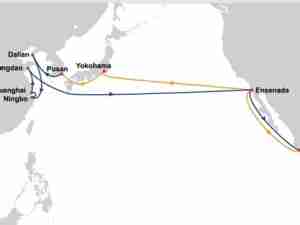"Freight rates to Europe have plunged 15% since the beginning of September," said Sunny Ho Lap-kee, executive director of the Hong Kong Shippers' Council.
He suggested the fall was the result of a new generation of vessels capable of carrying 7,000 20-ft equivalent units (teu) of cargo or more entering service in the second half, replacing 5,000-teu vessels in the Pacific. As the smaller vessels were transferred to European routes, rates had fallen.
An official from China Shipping Container Lines (CSCL), the mainland's No2 carrier, conceded that rates were under pressure but said his line would maintain earnings levels in the short term.
CSCL's declaration to the stock exchange yesterday indicated its unit-revenues had remained relatively stable in the third quarter, up 0.6% year on year to 9,125 yuan per teu on European routes.
However, the company saw third-quarter unit-revenue declines on intra-Asian, Australian and domestic routes.
"The decrease will be within five percent for Asia-Mediterranean sea lanes but no change in European [lanes]," said Fan An, a manager of its investor relationship department.
Mr. Fan also said CSCL had stopped imposing peak-season Europe surcharges from early last month, a month earlier than usual.
While Asia-Europe is the world's third-biggest trade lane, consultant Drewry in June reduced its full-year volume forecast for the northern Europe sector to 6.75 million teu after the anticipated first-quarter volumes did not materialize.
An executive at a Middle Eastern carrier said shipping lines were keen to add services that would further cut rates that on Asia-Europe routes had already fallen to US$850 per teu from US$1,000.
He expected the rate to fall further in the next nine months and noted that Ramadan was likely to slow demand from predominantly Muslim countries.
Independent carriers will suffer more than members of organizations such as the Far East Freight Conference, according to a conference member who said he was still able to charge cargo owners US$1,000 per box, down from US$1,100 early last month.
"It is too early to say that the market has already entered a decline because the fourth quarter is traditionally a flat season for shipping," said Karen Chan, an analyst with Credit Suisse First Boston.
Ms Chan projected freight rates would fall 10% a year for the next two years.
The downturn in freight rates has not come unexpectedly. Container vessel charter rates - a key indicator of market sentiment - began to fall in the third quarter. (South China Morning Post)





